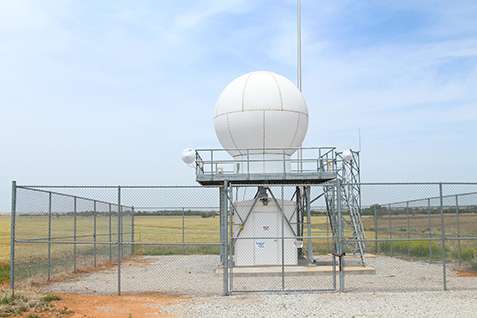New radars for estimating rainfall installed at ARM sites

How do clouds and rainfall change over time? The answers are important to understanding the world's climate. New instruments are now available to help observe cloud and rainfall processes. State-of-the-art scanning dual-polarized X- and C-band weather radars were installed at Atmospheric Radiation Measurement (ARM) Climate Research Facility sites. These instruments will improve observation of cloud and precipitation evolution, dynamic and microphysical processes, and rainfall amount, producing data that ultimately will help evaluate high-resolution climate model simulations.
Improved numerical modeling of the Earth's water cycle, including rainfall, is of fundamental importance to societal and many energy-related processes. Observations from these new capabilities will provide confidence in ARM radar rainfall estimates for evaluating high-resolution climate modeling simulations.
High-quality rainfall accumulation maps are important variables used to provide initial conditions for numerical model simulations and to evaluate the ability of models to capture the lifecycle of convective cloud systems. In this study, a team of scientists developed an initial set of rainfall products, including rainfall accumulation maps, from the new ARM radar systems. Researchers evaluated these products using intensive field observations at the ARM Southern Great Plains site during a joint field campaign sponsored by DOE and the National Aeronautics and Space Administration. These observations allowed the scientists to quantify the uncertainty of the radar-derived data products. Results of these investigations provide confidence in ARM radar rainfall estimates when similar systems are deployed to remote global locations.
The new rainfall data products are available to the research community through the ARM archive (www.archive.arm.gov/) and will be used for process studies and evaluation of high-resolution climate model simulations. The ARM Climate Research Facility is supported by BER.
More information: Scott E. Giangrande et al. Precipitation Estimation from the ARM Distributed Radar Network during the MC3E Campaign, Journal of Applied Meteorology and Climatology (2014). DOI: 10.1175/JAMC-D-13-0321.1
Provided by US Department of Energy


















